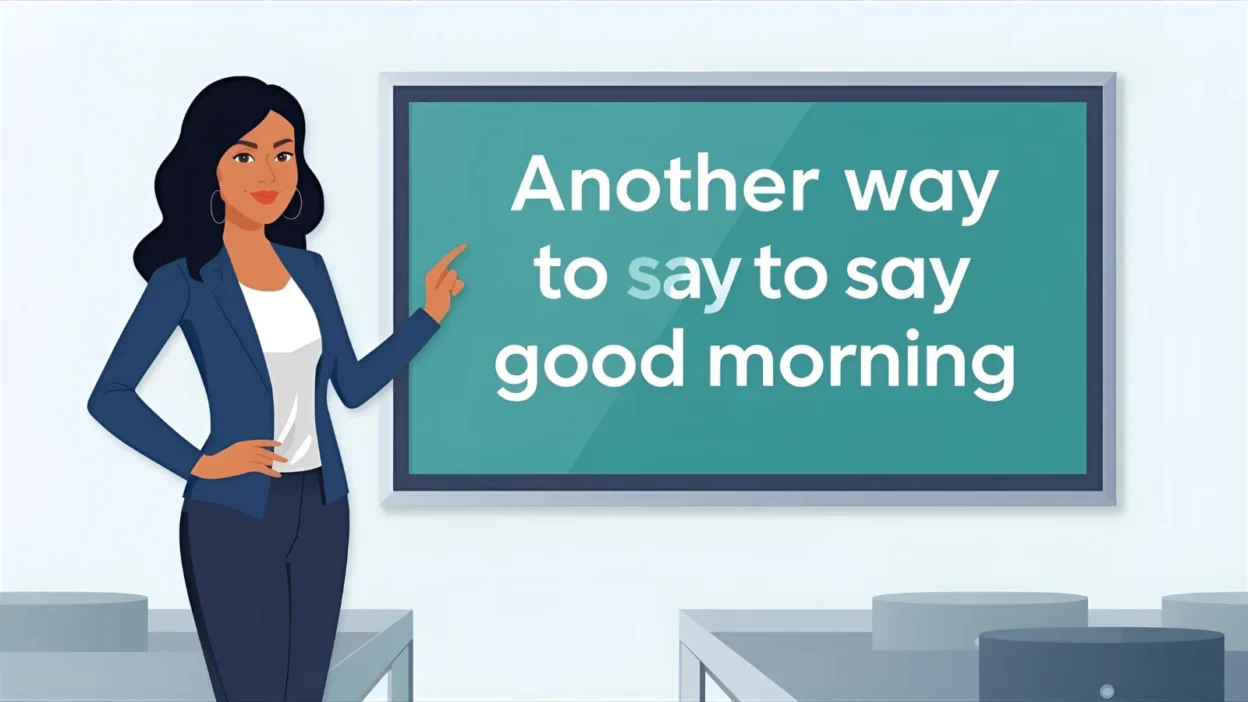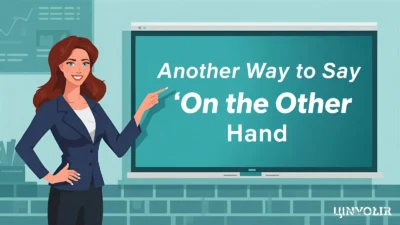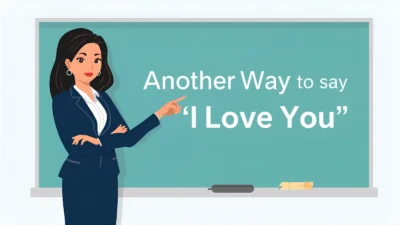The phrase “good morning” is the universal way to greet someone at the start of the day. It’s polite, warm, and versatile. But if you use it the same way every time, your greetings can feel repetitive or lack personality. Expanding your morning vocabulary helps you tailor your greetings to different settings—whether formal, casual, professional, or playful.
This guide explores 25 creative alternatives to “good morning,” each with its meaning, explanation, example, best use, and tone. With these, you can greet others in a way that’s fresh, friendly, and appropriate for any situation.
1. Morning!
Meaning: A shorter, casual version of good morning.
Detailed Explanation: Dropping “good” makes it quicker and more relaxed, commonly used among friends and coworkers.
Scenario Example: Morning! Did you get a chance to finish the report?
Best Use: Informal workplaces, friends, casual conversations.
Tone: Friendly, casual.
2. Top of the Morning
Meaning: A cheerful, traditional greeting.
Detailed Explanation: Popularized in Irish culture, it feels upbeat and a bit old-fashioned, often said playfully.
Scenario Example: Top of the morning! Ready for the big day?
Best Use: Friendly banter, lighthearted settings.
Tone: Cheerful, playful.
3. Rise and Shine
Meaning: Encourages someone to wake up energetically.
Detailed Explanation: Often used by parents, partners, or friends to start the day with positivity.
Scenario Example: Rise and shine! Time for breakfast.
Best Use: Home, casual texts, motivating someone.
Tone: Energetic, warm.
4. Good Day
Meaning: A formal alternative to good morning.
Detailed Explanation: Neutral, professional, and works across different time zones.
Scenario Example: Good day, everyone. Let’s start the meeting.
Best Use: Business, formal interactions.
Tone: Polite, professional.
5. Bright Morning
Meaning: A greeting that emphasizes a fresh start.
Detailed Explanation: Adds positivity and energy to a standard greeting.
Scenario Example: Bright morning to you! Let’s make it a productive one.
Best Use: Emails, uplifting greetings.
Tone: Optimistic, warm.
6. Hello Sunshine
Meaning: A playful and affectionate greeting.
Detailed Explanation: Works best when addressing someone you’re close to.
Scenario Example: Hello sunshine! How did you sleep?
Best Use: Friends, partners, family.
Tone: Warm, affectionate.
7. Morning Greetings
Meaning: General way to greet in the morning.
Detailed Explanation: Neutral, versatile, and polite.
Scenario Example: Morning greetings to all our guests—welcome to the conference.
Best Use: Group settings, formal or semi-formal events.
Tone: Polite, neutral.
8. Wishing You a Good Morning
Meaning: A thoughtful way to start someone’s day.
Detailed Explanation: More formal and complete than simply saying good morning.
Scenario Example: Wishing you a good morning and a successful meeting today.
Best Use: Business emails, professional greetings.
Tone: Respectful, professional.
9. Morning, Friend
Meaning: Friendly twist on the usual greeting.
Detailed Explanation: Personalizes the greeting by addressing someone directly.
Scenario Example: Morning, friend! Coffee’s on me today.
Best Use: Friends, colleagues.
Tone: Warm, friendly.
10. G’day
Meaning: Casual Australian greeting meaning good day.
Detailed Explanation: Informal, cheerful, and often used in speech.
Scenario Example: G’day! How’s everything going?
Best Use: Informal chats, friendly settings.
Tone: Casual, cheerful.
11. A Pleasant Morning to You
Meaning: Polite and slightly formal greeting.
Detailed Explanation: Adds courtesy and warmth.
Scenario Example: A pleasant morning to you, Professor.
Best Use: Professional or respectful interactions.
Tone: Polite, respectful.
12. Happy Morning
Meaning: A cheerful twist on the classic greeting.
Detailed Explanation: Spreads positivity and enthusiasm.
Scenario Example: Happy morning! I brought donuts for everyone.
Best Use: Casual settings, team environments.
Tone: Cheerful, uplifting.
13. Have a Great Morning
Meaning: A wish rather than just a greeting.
Detailed Explanation: Goes beyond acknowledgment and adds encouragement.
Scenario Example: Have a great morning! See you at lunch.
Best Use: Conversations, messages, emails.
Tone: Positive, encouraging.
14. Morning, Everyone
Meaning: Group greeting for the start of the day.
Detailed Explanation: Efficient for addressing multiple people at once.
Scenario Example: Morning, everyone! Let’s get started with today’s agenda.
Best Use: Meetings, classrooms, teams.
Tone: Friendly, inclusive.
15. Salutations
Meaning: A formal, slightly old-fashioned greeting.
Detailed Explanation: Adds variety in a professional or literary tone.
Scenario Example: Salutations! Ready to begin the day?
Best Use: Formal letters, speeches, playful contexts.
Tone: Formal, literary.
16. Good Morning, Team
Meaning: Group greeting tailored to colleagues.
Detailed Explanation: Builds unity and sets a professional yet friendly tone.
Scenario Example: Good morning, team! Let’s hit our targets today.
Best Use: Workplace, meetings.
Tone: Motivational, professional.
17. Lovely Morning
Meaning: Compliments the beauty of the day.
Detailed Explanation: Pairs a positive outlook with the greeting.
Scenario Example: Lovely morning, isn’t it?
Best Use: Casual conversations, outdoor settings.
Tone: Optimistic, warm.
18. Greetings and Good Morning
Meaning: Combines two polite forms of address.
Detailed Explanation: Works well in formal settings or ceremonies.
Scenario Example: Greetings and good morning to our honored guests.
Best Use: Formal gatherings, speeches.
Tone: Polite, formal.
19. Welcome to the Day
Meaning: Encourages embracing the new day.
Detailed Explanation: Motivational and uplifting, often used playfully.
Scenario Example: Welcome to the day! Let’s make it count.
Best Use: Motivational talks, casual greetings.
Tone: Inspiring, cheerful.
20. What a Beautiful Morning
Meaning: Observation-based greeting.
Detailed Explanation: Combines friendliness with a positive remark.
Scenario Example: What a beautiful morning! Did you see the sunrise?
Best Use: Casual chats, friendly encounters.
Tone: Friendly, warm.
21. Good Morning, Folks
Meaning: Friendly group greeting.
Detailed Explanation: Casual, often used in relaxed group settings.
Scenario Example: Good morning, folks! Let’s grab some coffee before we start.
Best Use: Casual meetings, community settings.
Tone: Relaxed, approachable.
22. Good Morning, Ladies and Gentlemen
Meaning: Formal way to address a group.
Detailed Explanation: Professional, respectful, and often used in events.
Scenario Example: Good morning, ladies and gentlemen. Welcome to our conference.
Best Use: Public speaking, professional events.
Tone: Formal, respectful.
23. How’s Your Morning?
Meaning: Greeting combined with a question.
Detailed Explanation: Interactive and conversational.
Scenario Example: How’s your morning going so far?
Best Use: Informal chats, coworkers, friends.
Tone: Friendly, engaging.
24. A Blessed Morning
Meaning: Adds a spiritual or positive wish.
Detailed Explanation: Often used in religious or uplifting contexts.
Scenario Example: Wishing you a blessed morning and a joyful day ahead.
Best Use: Religious gatherings, thoughtful messages.
Tone: Spiritual, kind.
25. Good Morning, Everyone
Meaning: Simple, inclusive group greeting.
Detailed Explanation: Works across all contexts, polite and neutral.
Scenario Example: Good morning, everyone. Let’s begin our session.
Best Use: Schools, workplaces, meetings.
Tone: Polite, inclusive.
Conclusion
While “good morning” is classic and widely accepted, you can make your greetings more engaging by using alternatives. From casual phrases like “Morning!” to formal options like “Good day” or uplifting ones like “Rise and shine,” the choice depends on your audience and tone. With these 25 alternatives, you’ll be able to start conversations with freshness, warmth, and variety every morning.



